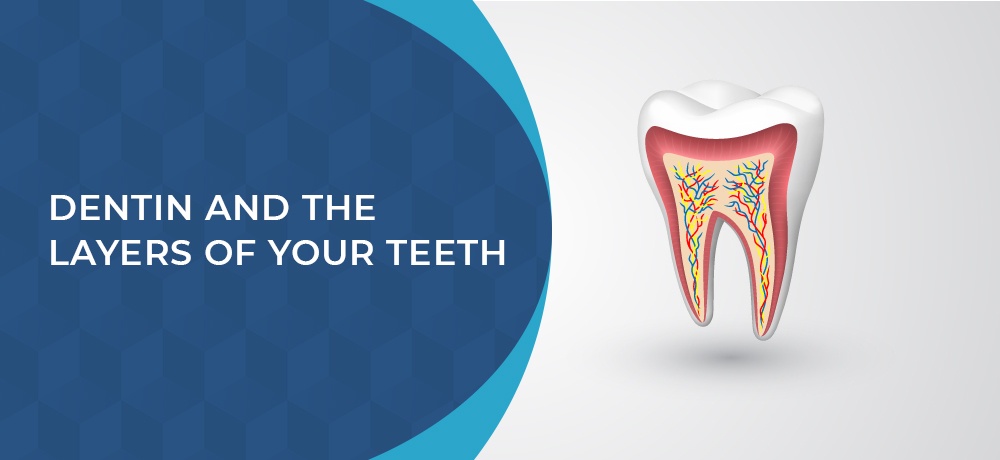Dentin and the Layers of Your Teeth

Dentin is a tissue that is calcified and consists of tiny tubules or tubes. It is the second layer of the tooth and is normally covered by enamel and covers the pulp, making up the majority of the tooth's structure. Both denser and harder than bone, the color of dentin may range anywhere from grey to black but is typically a pale yellow. This yellow hue is generally what is seen penetrating through the tooth's enamel. During tooth whitening, the dentin layer is exposed to bleaching agents such as hydrogen peroxide or carbamide peroxide. The lightening of the dentin from the use of a bleaching agent produces the appearance of whiter teeth.

Science Picture Co / Getty Images
Components
Dentin can be narrowed down to smaller components in itself:
- Primary Dentin - consisting of mantle dentin; the layer closest to the enamel, and newly formed predentin which has not mineralized.
- Secondary Dentin - after the formation of the roots, secondary dentin begins forming slowly and may cause the pulp chamber of the tooth to decrease in size.
- Tertiary Dentin - Formed as a defense mechanism to stimuli such as caries, tertiary dentin forms rapidly and irregularly.
Tooth sensitivity is caused when the dentin is exposed to temperature changes, acidic food or beverages, and sugars found again, in food or beverage. Dentin exposure is caused by receding gums, tooth decay, and the loss of enamel by dental abrasion.
Article Courtesy: https://www.verywellhealth.com/tooth-decay-natural-remedies-89987